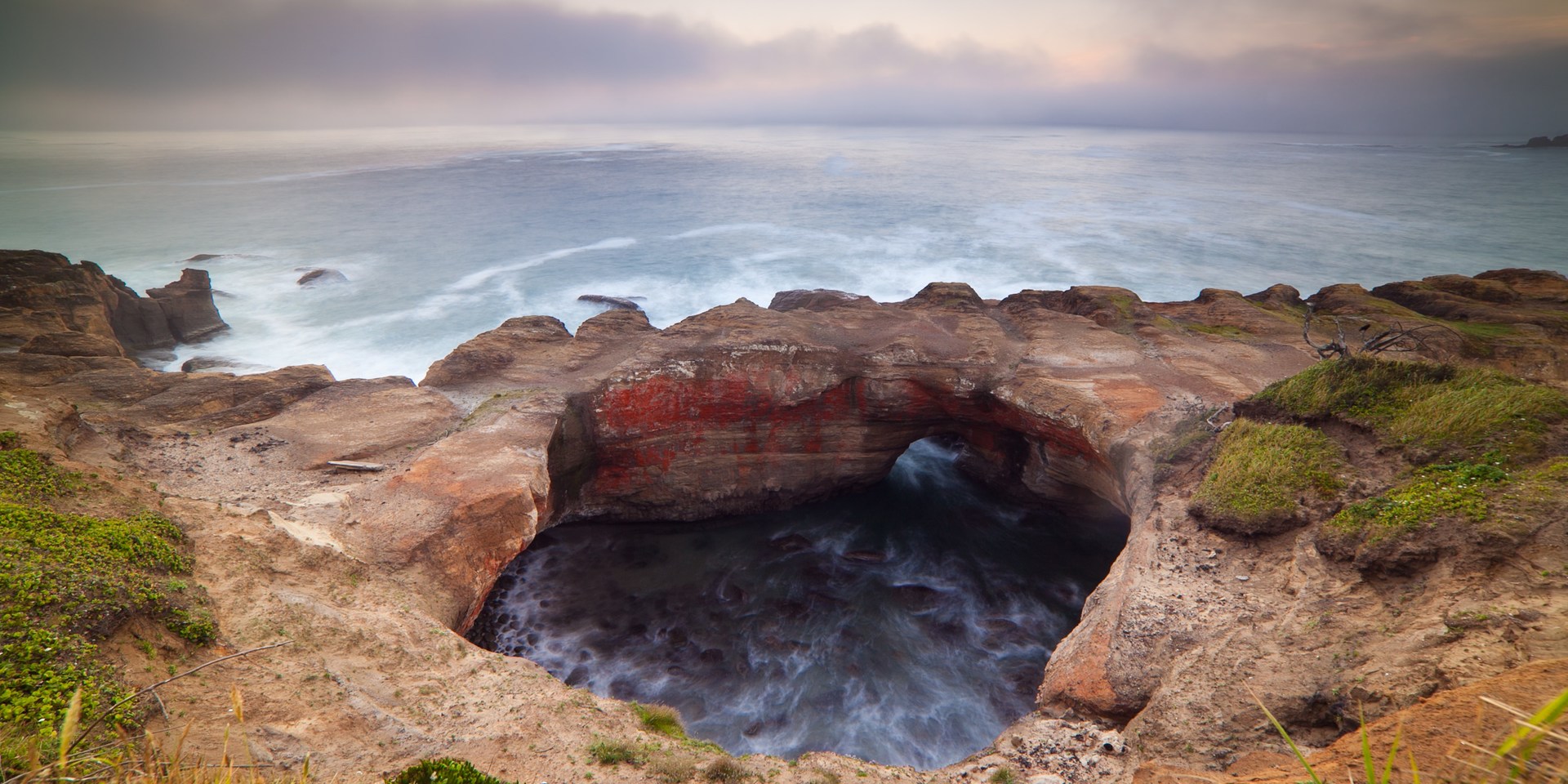Situated between Depoe Bay and Yaquina Head, Otter Rock and Devils Punch Bowl create some of the Oregon coast’s most dramatic headlands. The eroded yellow sandstone bowl itself was formed by the convergence and collapse of two caves amid the relentless beating of the ocean’s powerful waves. Beyond offering views of this geological formation, the upper end of the park is an excellent location for a day picnic, where you can see the sun set below Gull Rock, and watch the seasonal gray whale migration.* To view the inside of the punchbowl and the headland’s tide pools, head north on C Street for several blocks and take the trail down to Marine Gardens Beach during low tide. If you are planning on surfing the north end of Beverly Beach, park your car in one of the parking lots, and access the beach using a wooden staircase located on the south side of 1st Street between B and C Streets.
* Gray whales will migrate as many as 12,000 miles annually. There are two key time periods during which the largest number of whales pass the Oregon shores. Between late December and the beginning of January, the gray whales make their way down to the calving lagoons of Mexico’s Baja peninsula, and between mid-March and early April the whales return north to Alaska to feed. The best opportunities for viewing the whales are during these two periods, though you may also see whales in late summer when the roughly 200 resident whales stick around the central Oregon coast to feed. Visit the Whale Watching Spoken Here site for more information.
Otter Rock is part of the Otter Rock Marine Reserve. This means that there are specific prohibitions against fishing and the harvesting of fish, invertebrates, and seaweed. Check here for specific clarifications on regulations, exemptions, and a detailed representation of the area's boundaries.

















Comments
Sign In and share them.